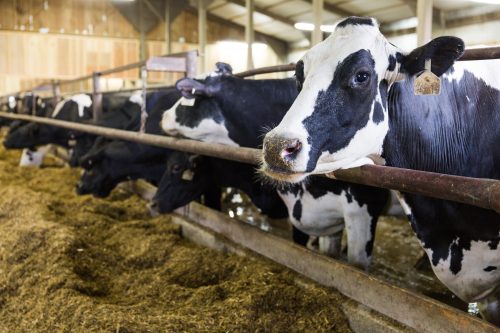Rumen Health: Challenges and Solutions
Posted: November 2, 2017 | Written By: Dayane Da Silva, Ph.D, Form-A-Feed Nutritionist

Rumen health is extremely important to farm profitability. Rumen disturbances can result in inadequate animal performance and cost farms a lot of milk. “Feed the bugs first, then the cows.” There is a lot of truth in this statement. After all, feedstuff passing the rumen undergoes an extensive process of fermentation by the microorganism before being ready to be absorbed by the cow. Each dietary component is important; however, nonstructural and structural carbohydrates deserve special attention. They are the largest components (up to 70%) of a dairy cow’s diet. Carbohydrates are fermented by the microorganisms in the rumen and converted mainly into volatile fatty acids (VFAs) which supply 70-80% of the cow’s energy demands. There are three main VFAs produced in the rumen: propionate, acetate and butyric. Each VFA plays different roles in the cow’s metabolism.
Propionate is primarily converted into glucose in the liver and plays a role in milk volume. The mammary gland utilizes 60-85% of the total glucose in lactating cows; lactose by itself accounts for 50-85% of mammary glucose utilization.
Acetate and butyric are the building blocks for de novo* fatty acids which are the short and medium- chain fatty acids that comprise up to 30% of the butterfat. De novo fatty acids are new molecules of fatty acids synthesized in the cytoplasm of the mammary epithelial cell from precursors absorbed from the blood. Moreover, carbohydrates are the major source of energy for the rumen microorganisms to grow and synthesize protein which after leaving the rumen contributes to 50% of the metabolized protein needed by the cows. Microbial amino acids are considered the perfect building blocks for milk protein. Therefore, increases in microbial protein outflow reduce the need for expensive synthetic amino acids to balance rations.
Diets formulated to promote ruminal health are the key for a successful dairy feeding program. Feed cost and high demands for energy, protein, and right fats are good reasons to focus on rumen health and build an efficient diet. A functional rumen will provide the right components to sustain high milk production levels and increase farm profits. However, feeding dairy cows and fulfilling their energy demands can be difficult. High fermentable diets are commonly fed, and rumen acidosis is likely to happen with negative impacts on microbial output. In these situations, consider feeding direct fed microbials (DFMs) and enzyme extracts as part of your animal’s diet as an aid to restore the ruminal microflora balance.
Form-A-Feed Sci-Mic 40-20 and SCOPE DFM products have enabled our nutritionists to formulate more flexible diets and increase the inclusion of forages in final rations without jeopardizing energy available for milk production. Sci-Mic 40-20 and SCOPE have researched levels of live yeast, lactic acid bacteria, and fungi enzyme extracts that support ruminal health. Effects of supplementation of live yeast on milk production are explained by yeast capability of stabilizing ruminal pH by inhibiting lactate production or increasing lactate utilization. Also, live yeast has demonstrated to increase total-tract organic matter, and neutral detergent fiber (NDF) digestibility by increasing the number of ruminal cellulolytic bacteria. Fungi enzyme extracts expedite the release of small particles of sugar in the rumen so cellulolytic bacteria can utilize them to grow and attach to the fiber faster, promoting higher fiber digestibility. Also, fungi enzyme extracts promote a more rapid turnover rate of ruminal lactic acid by increasing certain ruminal microbial populations. Form-A-Feed’s DFMs are used to orchestrate fermentation process in the rumen and are tailored to the farm’s specific diets.
Talk to your Form-A-Feed Nutritionist for more information about how to enhance rumen health, and be more profitable.